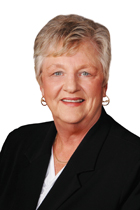
By Rosalyn S. Jordan, RN, BSN, MSc, CWOCN, WCC, VP, Clinical Services, RecoverCare
Rural facilities face a number of wound care challenges that are not routinely found in metropolitan areas. It’s important for everyone—whether they’re in a rural area or not—to have some knowledge of the challenges affecting both patients and staff.
Many rural areas do not have access to specialized or wound care-trained nurses and physicians. Also, educational opportunities related to wound care are not routinely offered in many rural areas. Nurses and physicians or other wound care providers practicing in rural areas have fewer opportunities to obtain specialized training because travel to major metropolitan areas is very costly and time consuming.
The cost of specialized wound care poses additional problems. Many rural facilities are in areas that are economically depressed so patients might not have insurance to cover the cost of certain types of care.
Many patients even avoid traveling in more populated areas, period, and that’s usually where you’ll find more specialists.
Also, because many rural patients are of the older generation, they might tend to prefer home remedies (such as “black salve,” udder balm, kerosene, bleach and axle grease) in favor of complicated wound dressings and treatment. Cost and availability of dressings in many rural areas also can be issues.
As for clinicians, most of them in rural areas are family practitioners who do not specialize or have training in wound care. Their wound care knowledge is based on what they were taught in medical school and that typically doesn’t include knowing advanced wound care dressings and treatment modalities.
Several years ago, I addressed the issue of pressure ulcer education as part of my dissertation to see what wound care was taught, and what wasn’t, in nursing schools across the nation. A good percentage of nurses acknowledged on the survey that they received minimal wound care training during their basic nursing education program.
Nurses arrive at a facility with the education required for registration or a license, but they haven’t been taught a lot about the details of wound healing or advanced wound care dressings and therapies during their general nursing courses. That leaves many long-term care facilities with the responsibility of education and training, along with competency evaluation of wound care.
There is generally a lack of nurses, physicians and other professionals with a wound care certification in rural areas. The need for additional training and education then impacts facility staffing. Adequate staffing is understandably one of the most pressing issues for every long-term care facility. This may be one area that presents a challenge to the rural nursing home because many are off the beaten path, so to speak.
Primarily, staffing is their first consideration. Therefore, allotting time for educational events may lead to staffing difficulties. It certainly is necessary to maintain staffing levels for patient care. So when there is a choice between providing care and attending a seminar on wound care, caregiving will take precedence.
Supplying know-how
Providers should remember to look to vendors for extra support, wound care education and training. Many times vendors will provide local, or on-site education, reducing the staff travel time into metropolitan areas for continuing education.
Wound-care education systems deal with everything from pressure ulcers to vascular ulcers to CE for nurses—not just product in-services, which they are obliged to do.
I have to say that many times, going to a facility to conduct an education program isn’t the answer because staff can’t afford the time, even though the educational program was planned. It is well known that emergency situations arise that can only result in little or limited staff availability. In planning the educational event with the facility, I might suggest offering the program to other facilities at the same time.
You might also find that a vendor is willing to work with a long-term care facility by allowing the facility to include their referral base for a win-win situation. For example, a facility not only might invite long-term care staff employed by the facility but also people who work in the referring physician offices, clinics or outpatient centers. Then, they can also use it as a way to promote their facility.
Many times other wound care training media are also available, such as “read and learn programs,” online programs and webinars.
It’s important to point out that even though webinars are frequently available for wound care training, many rural healthcare facilities do not have the technology required to access them.
Telemedicine, while an evolving technology, could be very useful in rural wound care. But it is as equally as important to keep in mind that photography is not viewed favorably in all healthcare settings. Some view it as a tool that could be used in litigation.
Still, telemedicine may be the wave of the future for wound care in rural healthcare facilities. That will occur with technological advances such as broader based Internet access. But that hasn’t happened just yet.
From the May 01, 2010 Issue of McKnight's Long-Term Care News




